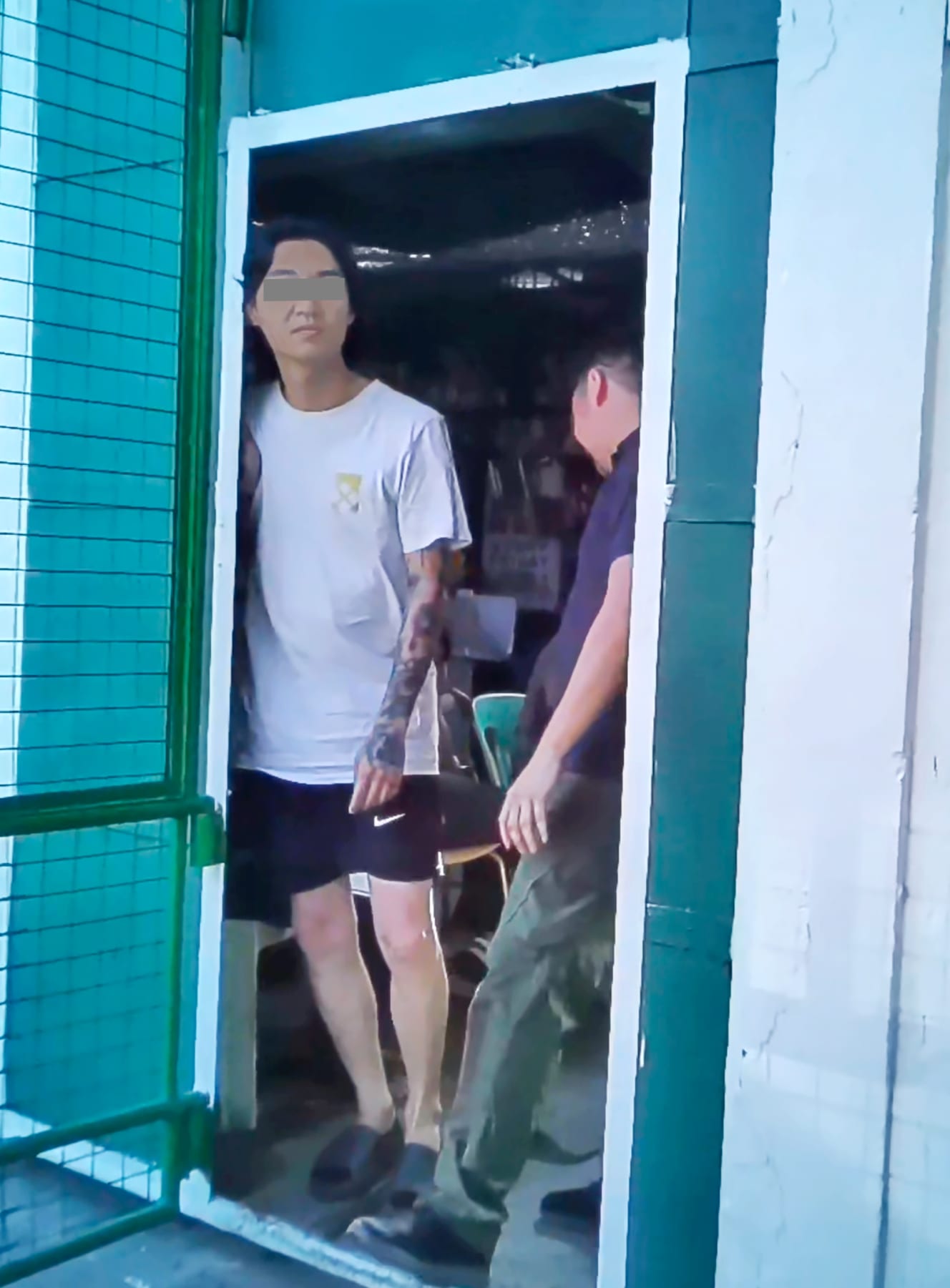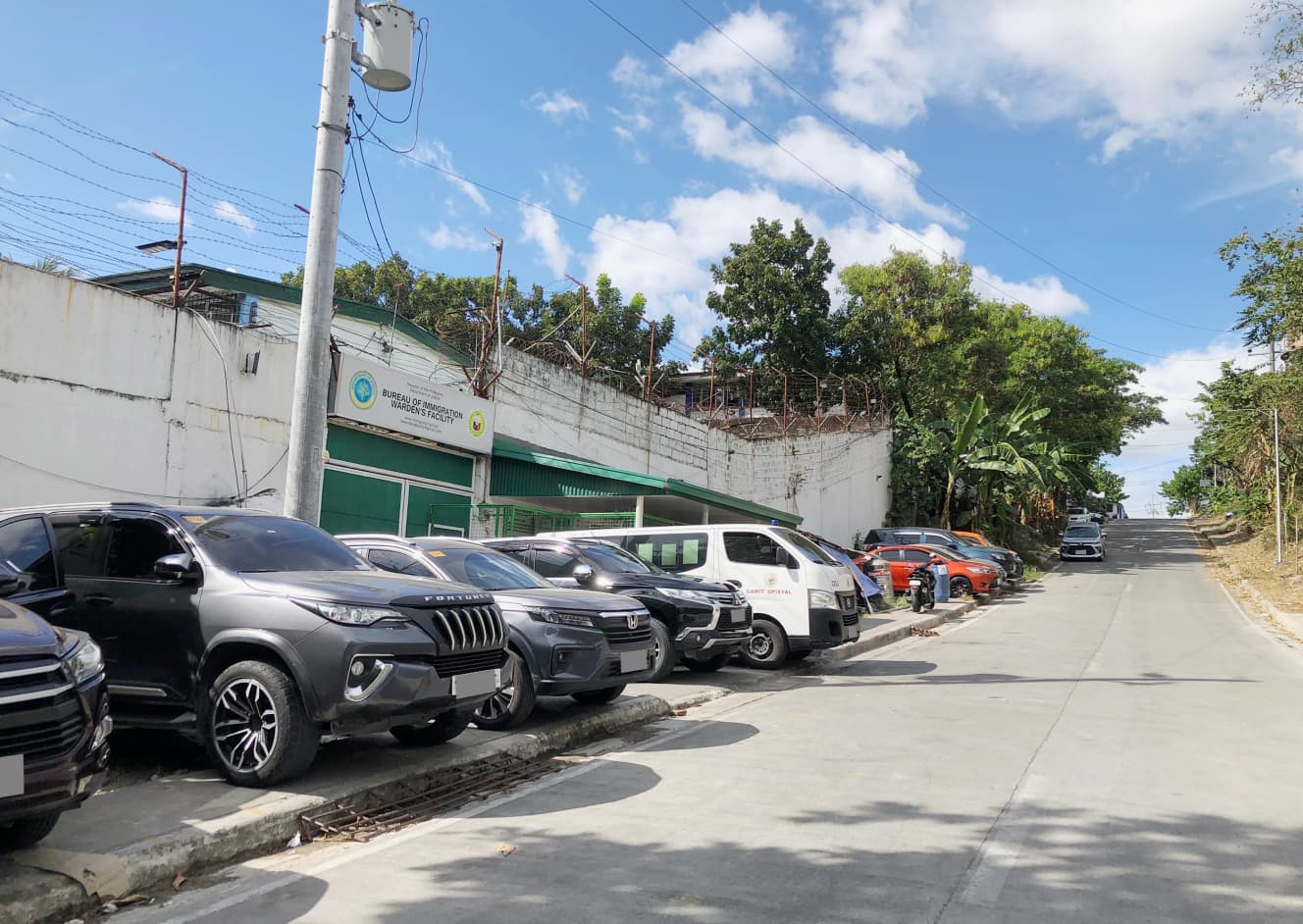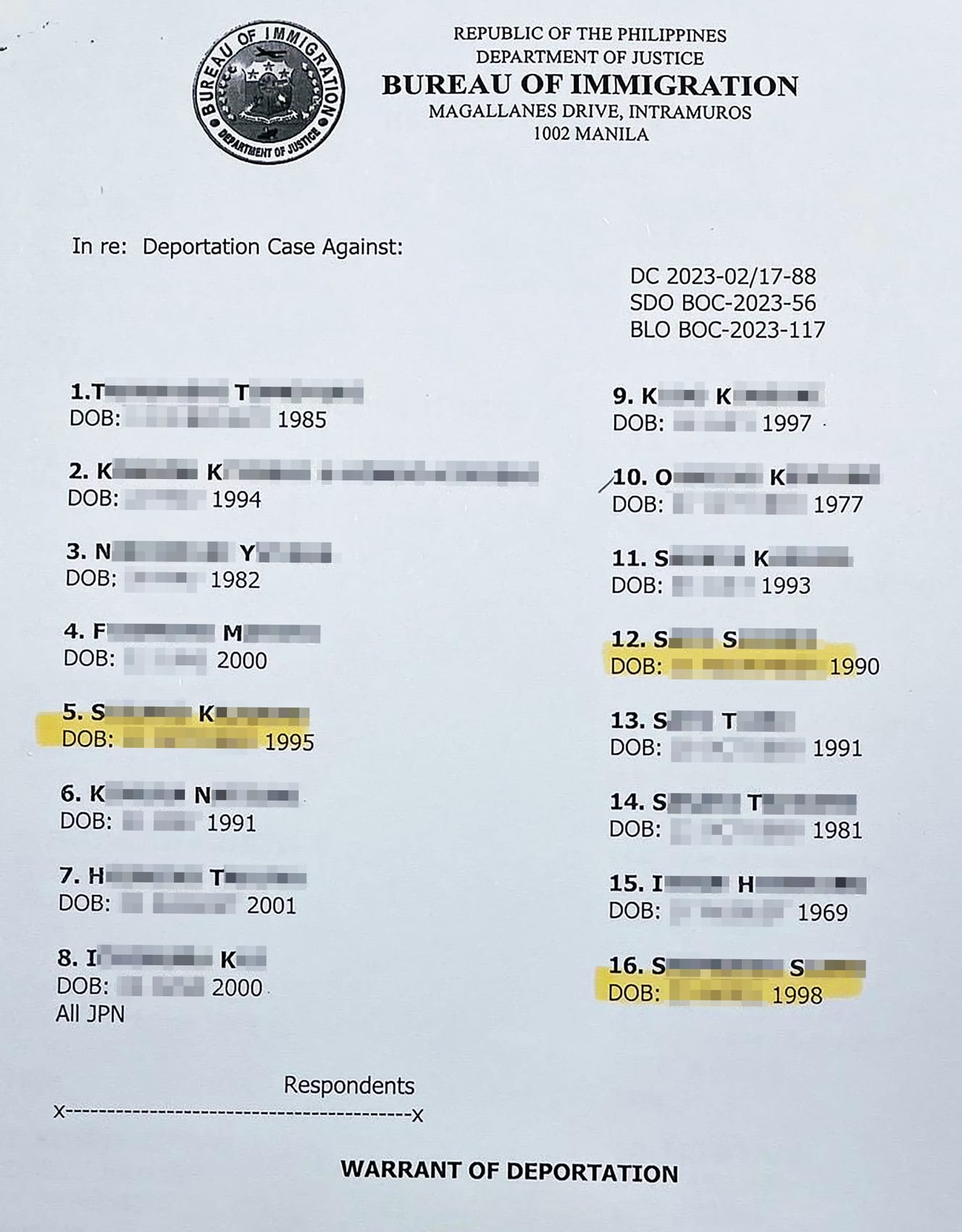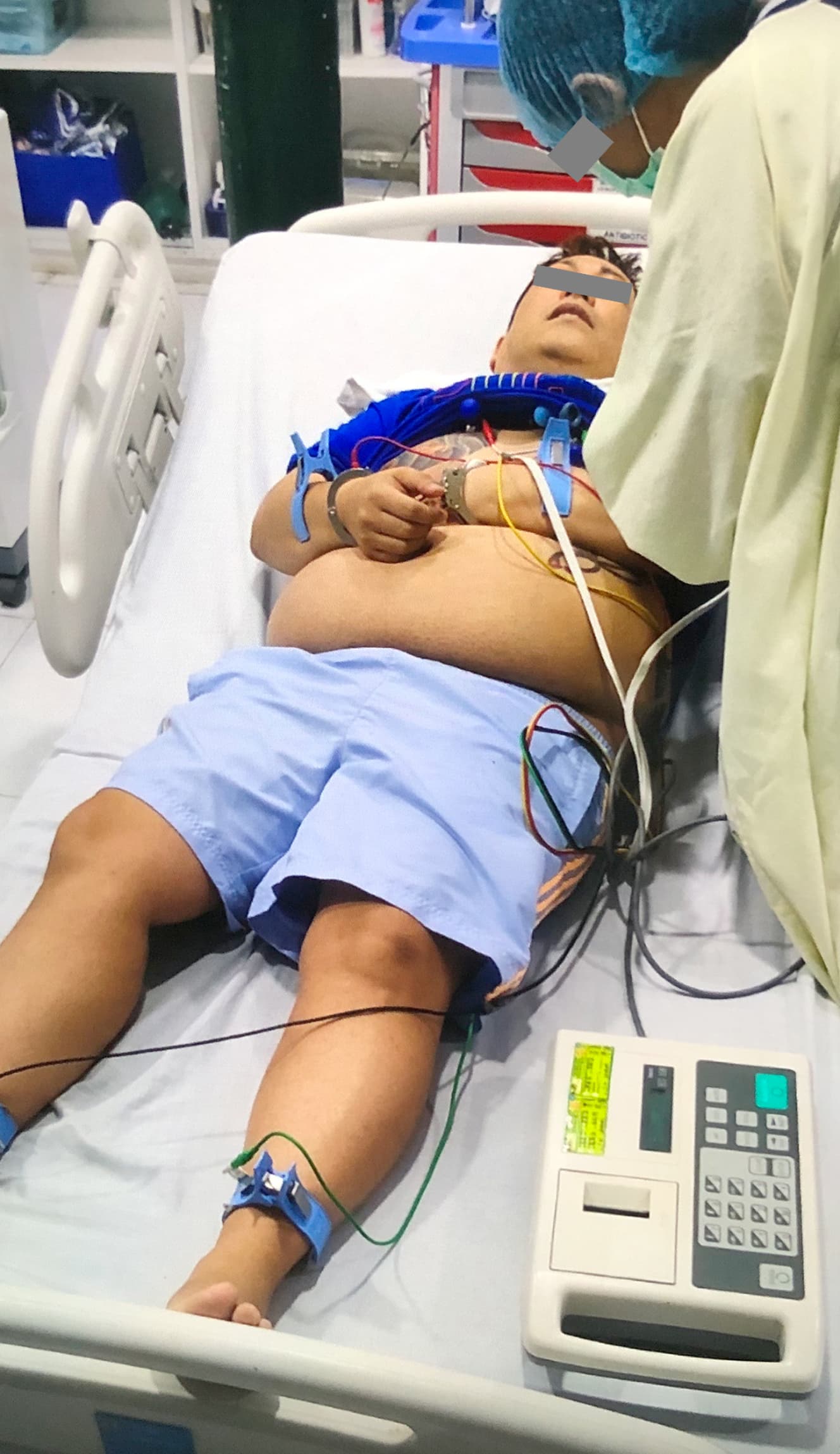Japanese Criminal Groups Still Exist– Second Rufi Group Lurking in the Philippines
We directly interviewed an underworld don in the Philippines--The arrest of the perpetrators of last year's undercover job robbery was nothing more than a "lizard's tail cut off. What does a "former Kaketsuko" who knows the local underworld have to say?

One corner is surrounded by a white wall about 15 meters high, with barbed wire strung along the top. At the front gate, which is closed by an iron door, staff members chatted while nibbling on snacks, and the gentle atmosphere typical of the southern islands flowed. I informed one of them of my purpose, filled out the necessary information on the designated form, and waited for a while. Soon, the iron door opened, and a young Japanese man in a white T-shirt and shorts appeared. Although he had a slender body, both of his arms were tattooed up to his wrists.
“Are you Mr. K?”
“Yes, that’s correct.”
The man nodded and wore a puzzled expression. It was understandable; after all, it was our first meeting.
This is the Bicutan Detention Center, located on a vast site about an hour’s drive south from the center of Manila, the capital of the Philippines. It houses approximately 200 foreigners who have violated Philippine immigration laws, including Japanese, Chinese, and Korean nationals. In late January, under the scorching sun, I visited the facility to meet with the suspect, Mr. K (28).
A group of Japanese nationals detained in this facility, calling themselves Rufi and others, recruited for illicit jobs using smartphones. In late January of last year, it was revealed that they were involved in various heinous crimes in Japan, shocking the Japanese society with news of even the loss of lives of elderly women
So far, those arrested and charged with involvement in the case include the group’s leader, Yuki Watanabe (39), executives Kiyoto Imamura (39), Seiya Fujita (39), Tomonobu Kojima (46), and dozens of men and women, mostly young people. However, one year later, the case remains unresolved.
About three weeks before visiting the detention facility, I met with Mr. F, a middle-aged man claiming to be a former gang member, at a karaoke box in Tokyo.
“Even now, there are still about nine Japanese people remaining in the Philippines, continuing to commit specialized fraud.”
Mr. F, who revealed this, had once been detained in the immigration facility for about four years. His time in detention coincided with when executives like Imamura, known as “Rufi,” were also detained. Although he was not involved in specialized fraud, he was detained for involvement in other crimes and was forcibly repatriated to Japan in the fall of 2022. I couldn’t hide my surprise at Mr. F’s words, but as someone who had been covering the underground society in the Philippines for many years, I also couldn’t help but feel that it was not surprising. Indeed, there was a second Rufi.
Who exactly are the individuals still engaging in specialized fraud in the Philippines?
Mr. F pointed to a photo saved on his smartphone. It was a passport with the face of a Japanese man.
“This guy is still in the Philippines.”
The man is in his late twenties and his registered domicile is in Aichi Prefecture. He was issued a five-year passport in October 2018. When this information about Mr. F was presented to officials at the Philippine Immigration Bureau, it was confirmed that the man had indeed been issued an arrest warrant from Japan as one of the members of a specialized fraud group. He is currently in hiding in the Philippines and was listed for repatriation by the Bureau. The list included names of 15 individuals, believed to be Japanese, in addition to the man from Aichi Prefecture. The youngest was 22 years old, and the oldest was 54. Nearly half of them were in their twenties, indicating that young people were predominantly involved. One of them was the K mentioned earlier.
Furthermore, it was discovered that K had been apprehended by immigration investigators at the end of last year and was currently in a detention facility. If a meeting could be arranged, it might provide some clues about the second Rufi. And so, I made the decision to fly to the Philippines.

“He’s still doing specialized fraud.”
The meeting time with K was extremely short, lasting only about 5 to 10 minutes per session. This was due to stricter regulations on visits by the immigration authorities since the Rufi incident. On the first day of the visit, K’s expression was stern, and the conversation was awkward, but with each subsequent visit, we gradually became more comfortable with each other.
K came to the Philippines in late October 2019. The criminal group was divided into several factions, and K was assigned to be a “runner” under Watanabe. He mentioned that he left the group about two years ago. Since then, to avoid being caught, he had been quietly living near the business district of Makati in a condominium, changing his whereabouts within the country. K explains how he managed to sustain himself.
“I bought Bitcoin before and after leaving the organization, and when its value increased due to the pandemic, I cashed it out. So, I had quite a bit of money. I didn’t indulge in luxuries like that, so I didn’t experience any financial difficulties.”
Living a life hiding in a foreign country. Gradually, I began to consider returning to Japan, but then I learned about the Rufi incident through the news.
“I was surprised to learn that such a big incident had occurred within this facility. There were also instances where I was threatened with a gun by Watanabe and his associates, using Filipino accomplices, so I didn’t want to stay with them anymore. That’s why, after they were repatriated, I voluntarily went to the immigration bureau myself. Nothing would progress unless I returned to Japan and faced the consequences.”
On December 14th of last year, K was apprehended while applying for an extension of his stay at the bureau’s headquarters. Until just before that moment, he had been in contact with one of his accomplices, but they didn’t disclose their whereabouts to each other, only reporting on their current situations. The question remained: are they still engaging in specialized fraud? K stated bluntly:
“I believe they are. They should all be scattered by now, but fundamentally, they have no other source of income to sustain their lives. So, they are likely still continuing (specialized fraud), or if they have a girlfriend, they might be living with her. But I think the possibility of them continuing is higher. All you need for runners is a minimum of two people. Then you just need one person to bring the money to the Philippines and a total of three to four people to handle everything.”
The majority of runners, including K, enter the country without a visa. Their stay is limited to 30 days, so if they exceed that period, they must apply for an extension. However, because they are listed for repatriation, if they attempt to extend their stay, they will be immediately detained. Therefore, if they wish to continue evading capture, they have no choice but to stay illegally, which means they cannot engage in legitimate work. Without assistance from relatives or friends, they may become economically disadvantaged “distressed nationals.” To avoid this, they may continue to resort to fraud.
K and his associates, including one with whom he was in contact until recently, have disappeared. This is because the rules in the detention facility have become stricter, prohibiting the use of smartphones. My attempt to uncover their true identities through K has already been thwarted.
However, they are still lurking somewhere in this country. The fact that the remnants of Rufi are still at large seems to have left even the immigration officials at a loss.
“We don’t know their whereabouts. There are testimonies indicating that they have disbanded after leaving the organization, making it difficult to locate them. Eventually, some may surrender voluntarily, or they may be apprehended when they attempt to extend their stay. Right now, what we are tracking is a group of delinquent Japanese nationals known as ‘JP Dragon.’ They seem to be connected to the specialized fraud groups.”


A dark presence taking root in the local community
The exact period when JP Dragon began to operate is unclear, but the leader is a man from Tokushima Prefecture, identified as R (53). Additionally, there are executives from Fukuoka Prefecture, known as Y (54), and from Hokkaido, identified as T (49), along with several others believed to be involved. In particular, R has been known as a notorious shadowy figure within certain Japanese circles for over 20 years. The immigration bureau’s officials explain how these individuals are connected to the Rufi group.
“The leader of JP Dragon has been residing in the Philippines for a long time and is said to be involved in activities such as money laundering and cockfighting business. Therefore, there is a possibility that they have assisted the Rufi group by providing guidance on the methods of money transfer required for specialized fraud and offering protection to evade detection.”
It seems that JP Dragon, centered around R, who is well-informed about the underground society in the Philippines, has close ties with the Rufi group
According to information from Japanese investigative authorities, in mid-April of last year, an 89-year-old Japanese man living in Warabi, Saitama Prefecture, fell victim to card substitution fraud, where four cash cards were swapped. One of the suspects made a call to the victim from the Philippines and sent another suspect disguised as a police officer to the victim’s home. They allegedly swapped the four cards under the pretense of “enhancing security” and the like. In this incident, three executives from JP Dragon, including R, and over ten members of the Rufi group were involved.
While R is believed to be at the top, his whereabouts remain unknown. There is information suggesting he resides in a high-rise building in the heart of the business district of Makati, but nothing is certain. The immigration bureau officials spoke with increased emphasis.
“We conducted an investigation into the upscale condominium rumored to be the base of the leader R, but we couldn’t find him. He has connections with the Philippine authorities behind the scenes, including the police, which makes it difficult for us to intervene recklessly.”

A sharp-eyed executive offers an explanation
Amidst the challenging pursuit, news came in late January that one of the executives of JP Dragon, T, had been detained by the police.
He was apprehended by the Philippine National Police headquarters. The charge was fraud. The investigating officer provided detailed explanations.
“A Filipino entrepreneur fell victim to investment fraud by suspect T and filed a complaint. In response, we conducted a sting operation and apprehended T while he was at a Japanese restaurant. Since there is also an arrest warrant issued from Japan, we plan to transfer him to the custody facility of the immigration bureau.”
We had requested a meeting with T on the spot, but it was declined. Later, after confirming that T had been transferred to the immigration detention facility, I visited and confronted him face-to-face.
The man who appeared in front of the iron gate had a stout physique, dressed in a blue t-shirt, shorts, and sandals. However, his gaze directed at me was incredibly sharp. Only his eyes weren’t smiling; it was an eerie expression. He seemed wary at first, but then said, “Okay, I’ll talk,” and agreed to the interview.
As soon as I began, I asked, “Are you affiliated with JP Dragon?” T responded by gesturing with both hands, waving them left and right.
“No, no. The content that’s being circulated on TV and YouTube is completely false.”
T said this, but admitted that he had connections with Watanabe and Imamura.
“They’re from Hokkaido and used to run clubs and shops in Susukino. I knew about them originally because I’m from Hokkaido too. Then, after coming to the Philippines, I happened to meet Watanabe, and when I asked him to transfer 100,000 yen for me, he ended up sending it to some bad guys.”
The conversation seems disjointed, but it appears there was a dispute with Watanabe over money transfers to Japan. Regarding the relationship with Imamura, T explained it like this:
“I also have plenty of connections with the Yakuza in Japan, so I told Imamura, who is in the Philippines, that he could tell me anything if something happened.”
T, through lawyer Kosuke Kashima, who is a defendant belonging to the Hiroshima Bar Association (currently appealing a fraud charge), facilitated a video call between Imamura, who was in custody at the Harajuku Police Station, and himself. It’s alleged that during this call, T instructed Imamura not to speak about anything unnecessary, but T offered this defense:
“I didn’t try to cover up or tell him not to talk about us. I just told Imamura, ‘There’s no point in not admitting to the crime you’ve done. You have to accept it openly,’ and he said, ‘Understood.'”
From these relationships, it becomes apparent that T holds a paternal role over Watanabe and Imamura. Although T’s name was implicated in the cash card substitution incident involving the 89-year-old man in Saitama Prefecture, he vehemently denied any involvement.
“There’s nothing to it. My name is well-known, so perhaps those who’ve been caught before mentioned it. It’s true that Watanabe and Imamura know me, but I would never engage in specialized fraud.”
The veracity of these statements will undoubtedly become clear in Japan eventually. T is facing fraud allegations in the Philippines and is expected to be deported once that matter is resolved. However, from the mastermind down to other executives, there are still individuals lurking in this country. Until they are eradicated, arrested only to be replaced by another Rufi, the cycle will continue. Behind this lies a twisted reality where the power of money enables them to evade the Philippine legal system’s grasp. Such absurdity, where delinquent nationals exploit this country, cannot be tolerated.
“They’re still at it. There are about 50 of them, you know. I know their whereabouts quite well, but I can’t disclose that. It’s my trump card.”
With those words, T flashed his white teeth, sporting a smug grin.


Mizutani Takeshi / Born in Mie Prefecture in 1975. Awarded the 9th Kaikou Ken Non-Fiction Prize for “Men Who Abandoned Japan: Struggling Japanese Living in the Philippines.” His latest work is “Report: International Romance Scams.” He conducts investigative activities in various parts of the world, including the Ukraine War.
From the February 23, 2024 issue of FRIDAY
Reporting and writing: Takehide Mizutani (nonfiction writer) PHOTO: Takehide Mizutani (all photos except 6th photo)